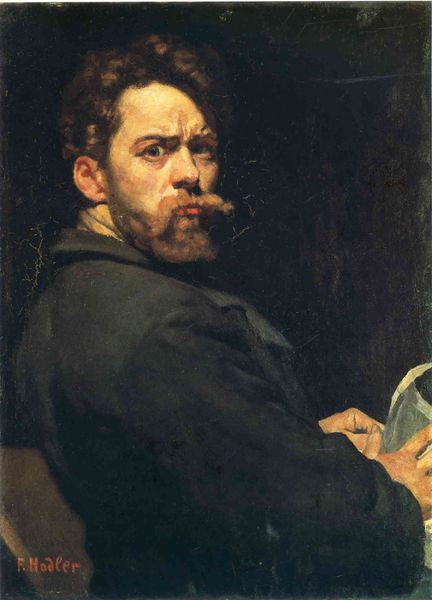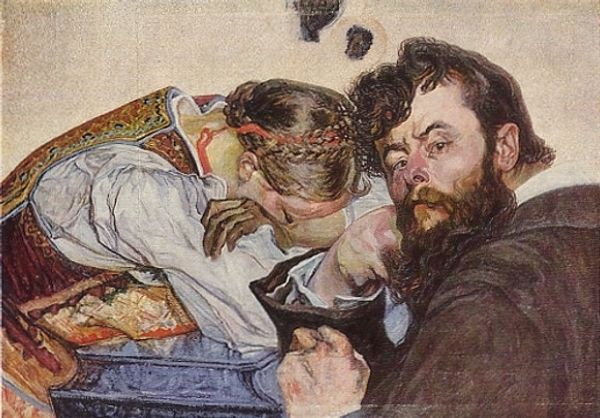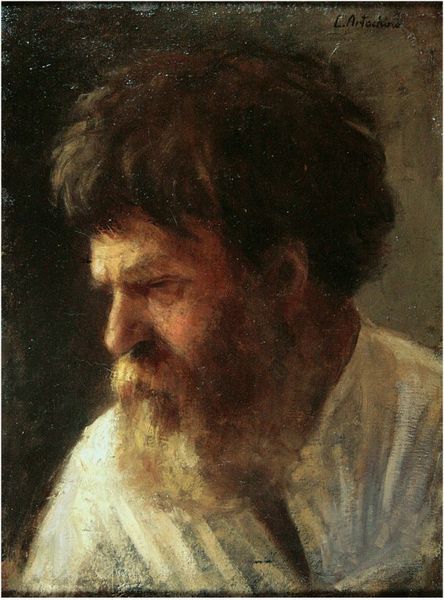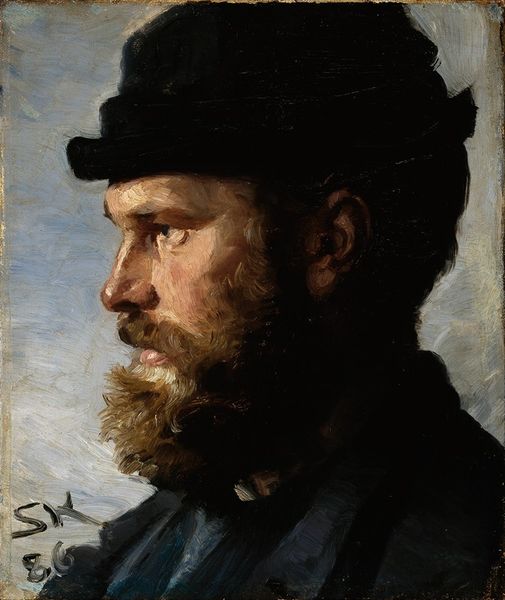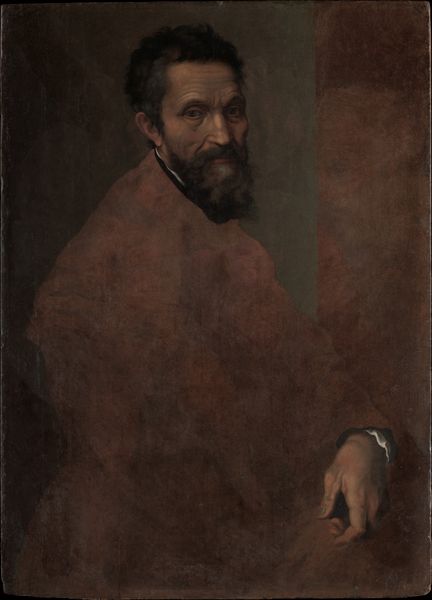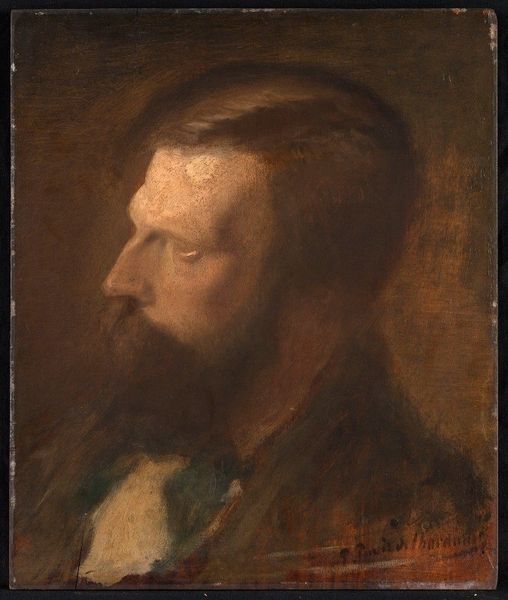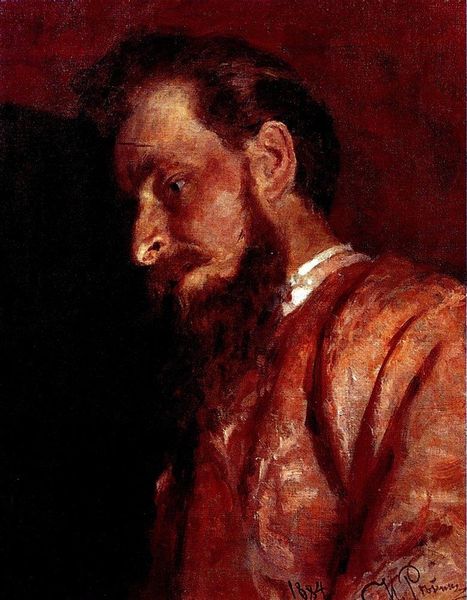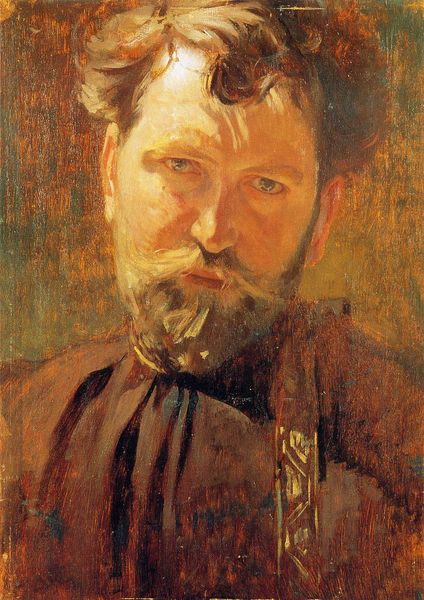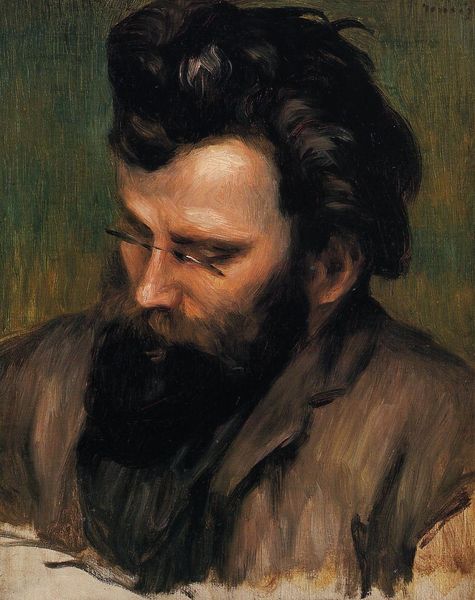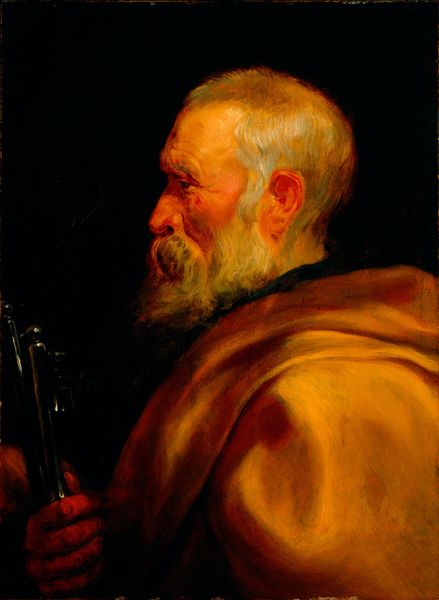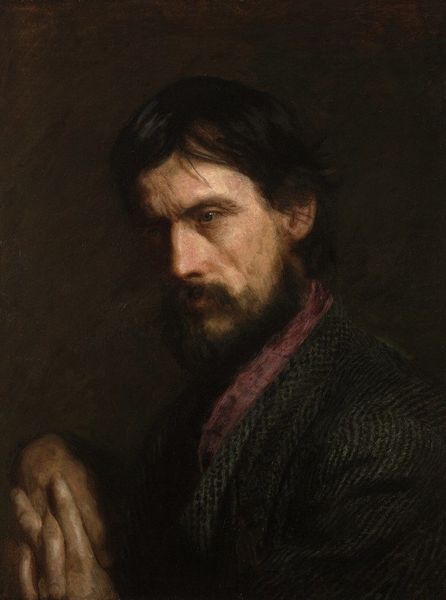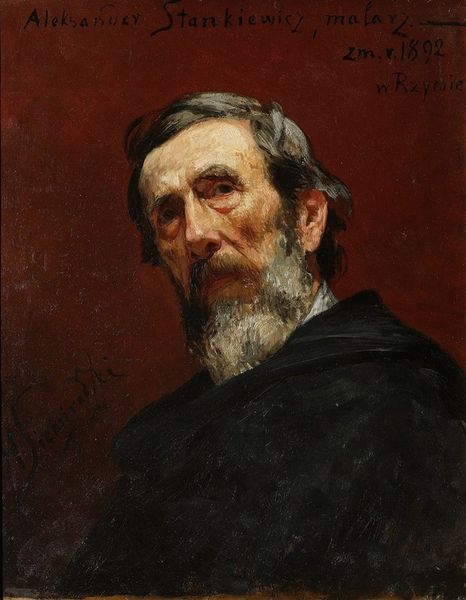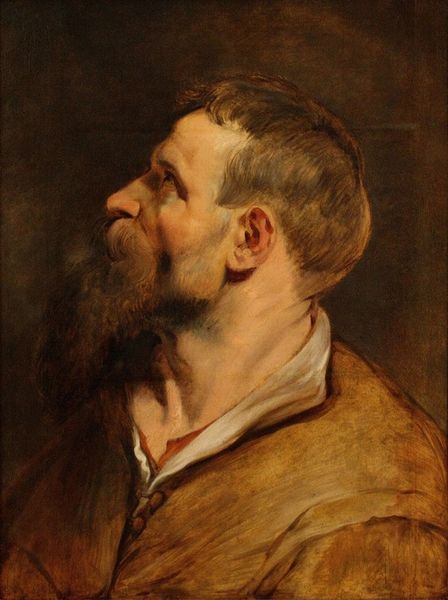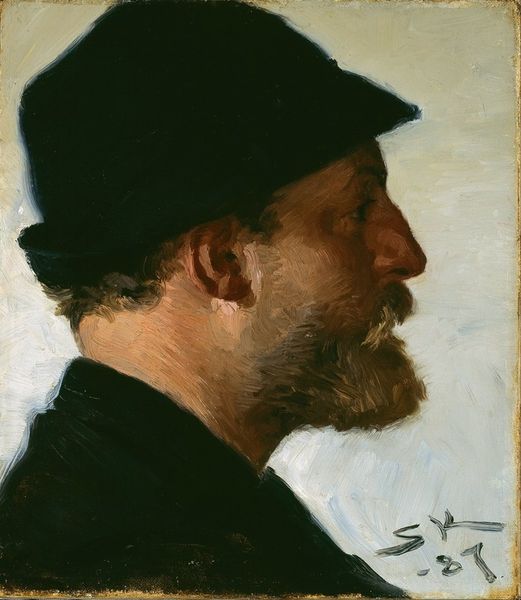
Copyright: Public Domain: Artvee
Look out! In this self-portrait from 1872, the Swiss artist Arnold Böcklin (1827-1901) depicts himself alongside the lingering presence of Death. Here, Death is personified as an eerie human skeleton who clutches a violin with one string. 🎻 Why would the artist choose to include such a frightening figure in his self-portrait? This work belongs to the lineage of ‘momento mori’ symbolism in the history of art. The skeleton is a reminder of universal mortality – death is ever present, breathing down the neck of all living things. In Böcklin’s self-portrait, Death physically lingers behind the painter. The pale tones of the mottled skull and bony digits create a striking contrast against the gloomy shades of Böcklin’s smock and the shadowy background. 💀 The artist looks up from his palette, brush raised as if he has been suddenly caught in the very moment of painting. Could he have felt the presence of the lingering figure? Böcklin himself gazes out of the canvas with a contemplative expression – yet he doesn’t meet our gaze. This creates a sense of separation that invites us to reflect on the timeless themes of the work. Arnold Böcklin encountered tragedy not only in his painting. His personal life was marked with misfortune. After serving time in the military, Böcklin was devastated by the loss of his fiancée. He eventually outlived eight of his fourteen children. Many of his works display an emotional tone and preoccupation with morbid themes. 🪦 Arnold Böcklin’s emotive focus fell out of favour after his death in 1901, when the art scene shifted towards modern experimentation. Do you think this work still resonates today, or is it outdated? 💭👇 Editor: Lucy Jude Grantham
Comments
artera almost 2 years ago
⋮
Death was a recurring theme in the work of Swiss painter Arnold Böcklin (1827-1901) and so it is fitting that the most famous image of him should be this striking self-portrait. From the mid-1850s, Böcklin developed a highly personal, allegorical art peopled with figures out of myth, legend, and superstition. Fleeing Paris at the outbreak of the Franco-Prussian War, Böcklin and his family settled in Munich. Several of his children had died in infancy and a cholera epidemic loomed, so it is little surprise that his paintings from this period should be full of morbidity. Working in the Romantic tradition, this self-portrait spromizes the conception of the artist as heroic individual, gazing haughtily at the viewer in bold siroscuro. The leering figure of Death seems to simultaneously undercut this idea and reinforce it. Böcklin may be listening intently to Death's tune, but is he acknowledging life's transience or defying Death and suggesting his art will secure him an immortality denied to most? In the coming years he produced the work for which he is most famous, paintings with dreamlike qualities that linked him with the Symbolist School and influenced the Surrealists. At the time of his death, Böcklin was regarded as the greatest painter in the Germanic world-indeed, the second movement of Mahler's Symphony No. 4, "Death Takes the Fiddle," which premiered that year, was inspired by this painting. In 2001, the Swiss issued a stamp reproducing this self-portrait to mark the centenary of the artist's death. Tellingly, Death himself is absent.
Join the conversation
Join millions of artists and users on Artera today and experience the ultimate creative platform.
